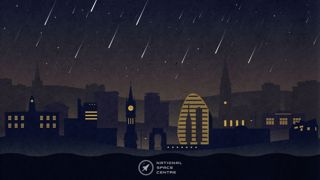
Ursid Meteor Shower 2021
- 21st Dec 2021
- Author: Malika Andress
Ursid Meteor Shower
Hot off the tail of the stunning Geminid meteor shower last week comes the Ursids, peaking 22-23 December between midnight and dawn.
The Ursid meteor shower is a more low-key affair. This minor meteor shower produces about 5-10 meteors per hour, but this year could be a good show if the skies are clear.
Best viewing will be 22-23 December between midnight and dawn.
The Ursids are produced by dust grains left behind by comet 8P/Tuttle, which was first discovered in 1790. Comets constantly shed dust and stones as they fly around the Sun, and it is this debris along Tuttle’s path that causes the Ursids. As the debris hits Earth’s atmosphere at high speed, it heats up and disintegrates in flashes of light that we call meteors.
How to watch the Ursids
The Ursids are named after the constellation Ursa Minor as this is the direction from which they appear to originate. While the meteors originate from this point they can be best seen 30 degrees away from Ursa Minor, stretching across large sections of the sky.
To view the Ursids from the UK, head out between midnight and dawn on 22-23 December.
You do not need to look in any particular direction. Lean back, let your eyes adjust to the dark, and watch the whole sky (it helps to have friends look in different directions).
The darker the location the better, so find the darkest sky you can away from city lights.
As always in the UK, clouds can be an issue, but be patient.
You can look for the Ursids on other nights as well. The shower runs annually between 17-26 December.
Meteor Infographic
Download our National Space Centre Meteor Shower Guide to make sure you are fully prepared to watch the Ursids!
Stay tuned in 2022 for upcoming meteor showers:
Other upcoming meteor showers for 2022 include:
Quadrantids
Comet of Origin: The cause of the Quadrantids is a bit of a mystery, but it’s thought that the asteroid 2003 EH1 is the source of the debris.
Radiant: the northern tip of Boötes
Peak Activity: 03 January 2022
Peak Activity Meteor Count: 10-20 meteors per hour
Lyrids
Comet of Origin: Thatcher
Radiant: constellation Lyra
Peak Activity: 22 April 2022
Peak Activity Meteor Count: 10-20 meteors per hour
Eta Aquarids
Comet of Origin: Halley
Radiant: constellation Aquarius
Peak Activity: 06 May 2022
Peak Activity Meteor Count: 20-60 meteors per hour
Delta Aquarids
Comet of Origin: 96P/Machholz
Radiant: constellation Aquarius
Peak Activity: 28/29 July 2022
Peak Activity Meteor Count: 20 meteors per hour
Perseids
Comet of Origin: 109P/Swift-Tuttle
Radiant: constellation Perseus
Peak Activity: 12-13 August 2022
Peak Activity Meteor Count: 90 meteors per hour
Draconids
Comet of Origin: Comet 21P/Giacobini-Zinner
Radiant: constellation Draco the Dragon
Peak Activity: 07 October 2022
Peak Activity Meteor Count: A few an hour (In rare instances, fiery Draco has been known to spew forth many hundreds of meteors in a single hour.)
Orionids
Comet of Origin: Halley
Radiant: constellation Orion
Peak Activity: 21/22 October 2022
Peak Activity Meteor Count: 10-20 meteors per hour
Taurids
Comet of Origin: 2P/Encke
Radiant: constellation Taurus
Peak Activity: 04/05 Nov 2022
Peak Activity Meteor Count: 10-20 meteors per hour
Leonids
Comet of Origin: 55P/Tempel-Tuttle
Radiant: constellation Leo
Peak Activity: 17/18 November 2022
Peak Activity Meteor Count: 10-20 meteors per hour
Geminids
Comet of Origin: 3200 Phaethon
Radiant: constellation Gemini
Peak Activity: 13-14 December 2022
Peak Activity Meteor Count: 120 meteors per hour
Ursids
Comet of Origin: 8P/Tuttle
Radiant: constellation Ursa Minor
Peak Activity: Dec. 21-22, 2022
Peak Activity Meteor Count: 10 meteors per hour




